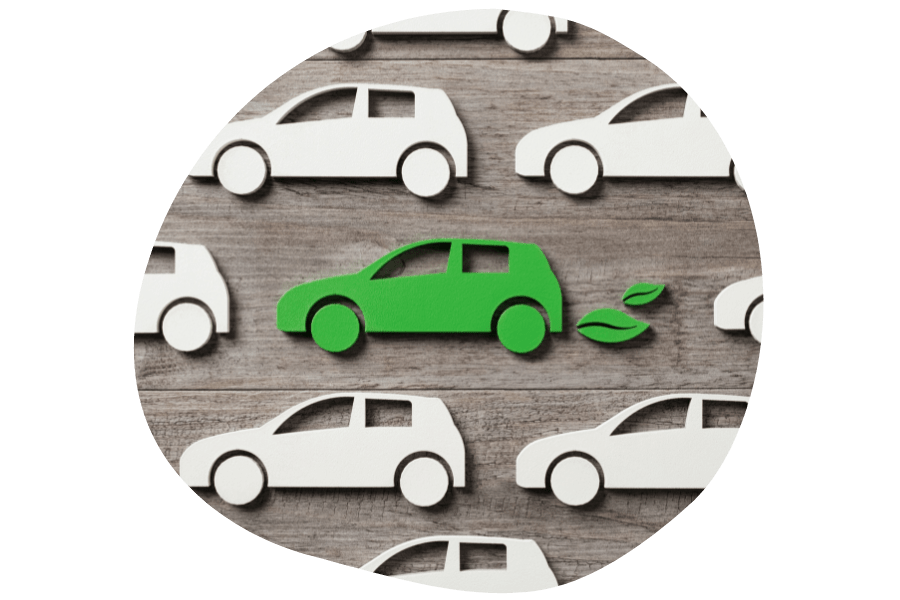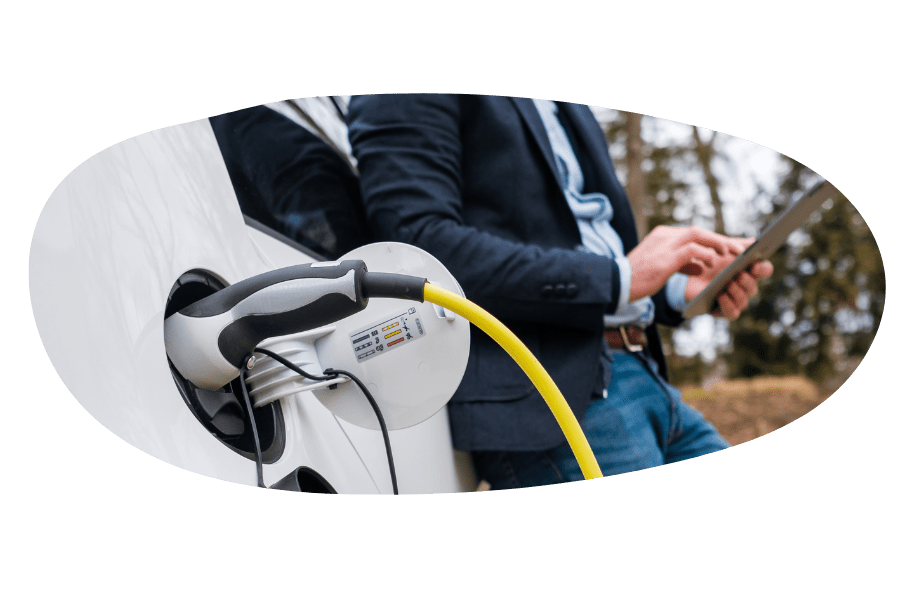The transition to a fully electrified fleet is no easy task. The electrification brings numerous challenges, such as encouraging employees to fully embrace electric driving, choosing the right charging solution, the complexity of smart charging, and ensuring employee well-being when charging at home. In this post, we delve deeper into all these issues!
Why Encourage Electric Driving?

Electric vehicles offer numerous benefits for both companies and individual employees in Belgium. Here are some reasons why the transition to electric driving is strongly encouraged:
Tax Benefits: In Belgium, employees who have access to a company car enjoy tax benefits. Electric vehicles are treated more favorably tax-wise than combustion engine vehicles, resulting in lower benefits-in-kind (BIK).
Reduced CO2 Tax: Electric vehicles are exempt from the CO2 tax applied to conventional company cars, leading to significant cost savings for companies.
Tax Deductibility: Electric vehicles are 100% tax-deductible for corporations, helping companies reduce their tax obligations.
Lower Operating Costs: Electric vehicles have lower operating costs due to the cheaper price of electricity compared to fuel, less maintenance, and lower emissions.
Sustainable Image: Companies that use electric vehicles demonstrate their commitment to sustainability and reduced environmental impact, which can contribute to a positive image and customer satisfaction.
Long-term Planning: Electric vehicles offer companies a long-term solution, as they comply with stricter emission standards that may be imposed in the future, such as Access to Low Emission Zones (LEZ).
Overall, the switch to electric vehicles in Belgium offers significant financial benefits for both employers and employees, while contributing to a green and sustainable corporate image. It can be a smart strategic move for companies in Belgium to take advantage of these benefits while reducing their environmental impact.
How to Motivate Employees for an EV?

Employees increasingly value companies that embrace sustainability and look beyond financial results. It is crucial to engage and motivate employees to make the switch to electric driving.
It starts with awareness and education. Employees need to understand the benefits, such as:
Increased Employee Satisfaction: Employees who are given the option to drive electric vehicles can benefit from attractive secondary employment benefits, contributing to their satisfaction and engagement.
Sustainability: Emphasize how electric driving contributes to a greener future and the fight against climate change, and how this aligns with the company’s vision. Employees want to know that electric driving is not only good for the company but also for themselves and the environment.
Range Anxiety: Employees need not worry about “range anxiety” (fear of not being able to cover enough distance) when driving an EV. Modern electric vehicles have significant ranges of more than 300-400 kilometers per charge, which is more than sufficient for most daily trips and commuting. Moreover, employees can easily charge their EV’s while they are stationary (more than 95% of the time), such as at home or at work, without having to wait for hours.
Driving Comfort and Safety: EV’s often offer a smooth and quiet driving experience, significantly enhancing driving comfort. In addition, they are equipped with various features that make them safer on the road.
Considerations for Home Charging
Home charging is key to a smooth transition to electric driving. It enables employees to easily charge their vehicles. However, there are still many uncertainties today for both employees and employers.

Savings through Home Charging: Yes, you heard it right; you can save money as a company when your employees charge at home. This is because public charging is always more expensive than home charging (approximately €0.35/kWh). Therefore, it is in your best interest for your employees to prefer home charging and see the benefits of it. In practice, we see that employees often quickly charge publicly when driving home or to work. They often do this because they fear peak consumption at home or worry about charging in time. With Scopt’s solution, end users will prefer home charging because they get more return from their solar panel installation and have full control over their peak consumption. In our data, we see that employers can save around €50 per month per employee if more home charging is done.artisan. Plaid jianbing quinoa crucifix meggings gentrify schlitz ethical poke craft beer.
Reassurance about Range Anxiety: Employees need not worry about “range anxiety,” the fear of not being able to drive enough kilometers with an electric car. It is important to provide employees with insight into the charging process and give them control over charging. With an application like Scopt, they always have a clear overview of their charging sessions and control over the way they charge. This way, they can see how much their car has charged and how many kilometers they can drive with it.
A Smart Charging Station: Employees want the certainty that the charging station used is smart enough. Instead of looking for expensive charging stations with built-in functionalities, it is more interesting to use a software solution like Scopt. This can intelligently control existing ‘dumb’ charging stations. This way, you have the flexibility to choose from a wide range of compatible charging stations, and Scopt does the rest.
Insight into Consumption: The charging station is installed at the employee’s home, which means that the employee wants to know the impact of charging on their total electricity consumption. Questions like “What percentage of my consumption is for charging the car?”, “How much of my solar panel installation is used for the car?”, and “How much of that solar production do I have left?” can be answered. Provide your employees with this insight by giving them an easy-to-use application where they can see these things.
Control of Capacity Tariff: On January 1, 2023, the Flemish Energy Regulator (VREG) introduced the capacity tariff. This means that part of your energy bill is calculated based on your peak consumption. You may have already received the question, “You reimburse my charged kWh, but doesn’t a charging station also cause higher peak consumption?”. Employees can set a maximum peak consumption from the electricity grid via the Scopt app, and Scopt will constantly optimize the charging station’s power based on household consumption. For example, your EV will charge less when you start frying fries or when your heat pump starts making hot water, avoiding high peaks.
Load Balancing: Be careful with the term load balancing and advise your employees on what it means. People often think that load balancing refers to the capacity tariff or solar optimization, but in practice, this often means nothing more than securing the main fuse with charging station brands. If your main fuse is about to trip, the charging station will reduce charging, but this is not energy optimization. You need an external system like Scopt for that.
In Summary
Ensure that employees are fully reassured by providing them with transparent insight into their charging behavior and its impact on their energy consumption. Through automatic optimization, they can use energy for their EV’s more efficiently, resulting in both cost savings and environmental awareness. By doing this we will be able to tackle the electrification challenges together!